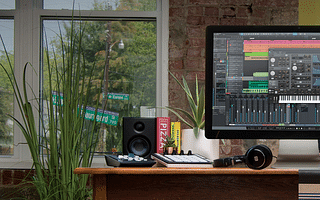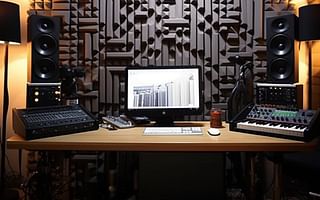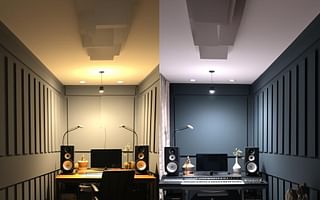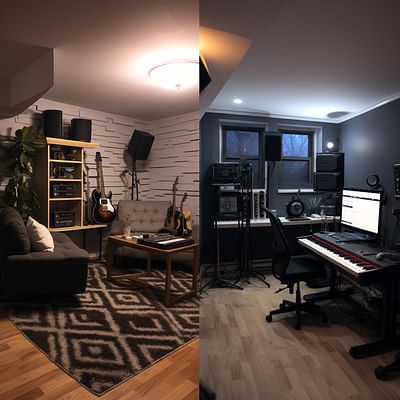🎧 Soundproofing a Home Recording Studio Quiz 🎤
Soundproofing a Home Recording Studio Quiz
Test your knowledge on cost-effective options for soundproofing a home recording studio.
Are you setting up a home recording studio and looking for cost-effective options to soundproof it? Test your knowledge with our Soundproofing a Home Recording Studio Quiz. Soundproofing is crucial to ensure that unwanted noise doesn't interfere with your recordings. Let's see how much you know about the key elements of soundproofing.
Question 1: What is the key to successful soundproofing?
- Adding mass only
- Damping only
- Sealing all gaps and cracks only
- A combination of adding mass, damping, decoupling, and sealing all gaps and cracks
Correct Answer: A combination of adding mass, damping, decoupling, and sealing all gaps and cracks.
Successful soundproofing involves a combination of different techniques. Adding mass helps to block sound, damping reduces vibrations, decoupling prevents sound transmission through connections, and sealing all gaps and cracks ensures no sound leaks through.
Question 2: What is Mass Loaded Vinyl (MLV)?
- A noise-proofing compound
- A type of soundproofing foam
- A flexible, dense and thin material ideal for soundproofing
- A type of sealant for gaps and cracks
Correct Answer: A flexible, dense and thin material ideal for soundproofing.
Mass Loaded Vinyl (MLV) is a versatile material used for soundproofing. It is flexible, dense, and thin, making it ideal for adding mass to walls, floors, and ceilings to block sound.
Question 3: What is Green Glue used for?
- Sealing gaps and cracks
- Adding mass to the walls
- Applied between two layers of drywall or other rigid materials for noise-proofing
- Used for decoupling
Correct Answer: Applied between two layers of drywall or other rigid materials for noise-proofing.
Green Glue is a noise-proofing compound that is applied between two layers of drywall or other rigid materials. It helps to dampen sound vibrations and reduce noise transmission.
Question 4: What does adding mass to your walls do?
- Increases sound transmission
- Decreases sound transmission
- Makes the wall look thicker
- None of the above
Correct Answer: Decreases sound transmission.
Adding mass to your walls can significantly reduce sound transmission. The additional weight helps to block sound waves and prevent them from passing through the walls.
Question 5: What does decoupling involve?
- Adding mass to the walls
- Sealing all gaps and cracks
- Separating the connection between two sides of a wall to prevent sound vibration
- None of the above
Correct Answer: Separating the connection between two sides of a wall to prevent sound vibration.
Decoupling involves creating a gap or using resilient materials to separate the connection between two sides of a wall. This prevents sound vibrations from transferring through the structure and reduces noise transmission.
Now that you've tested your knowledge on soundproofing a home recording studio, you can use these insights to make informed decisions when setting up your own studio. Remember, successful soundproofing requires a combination of techniques to achieve optimal results.











